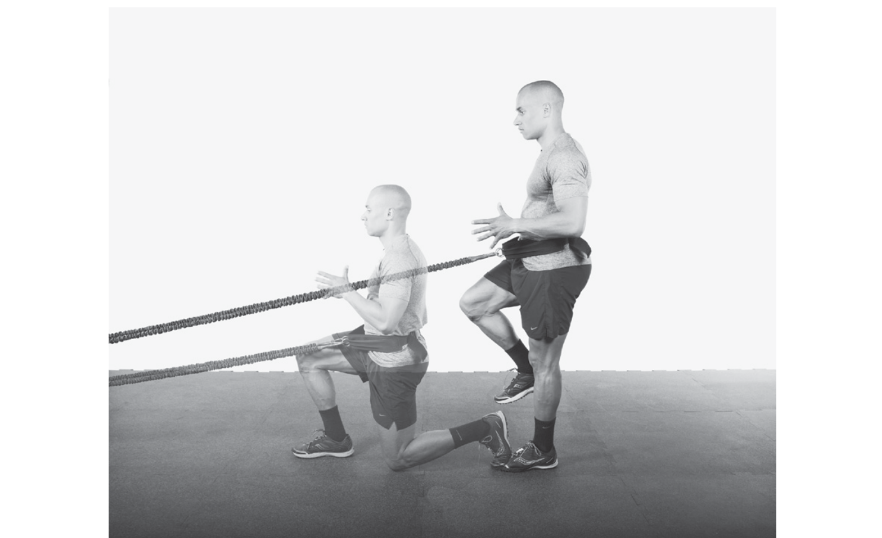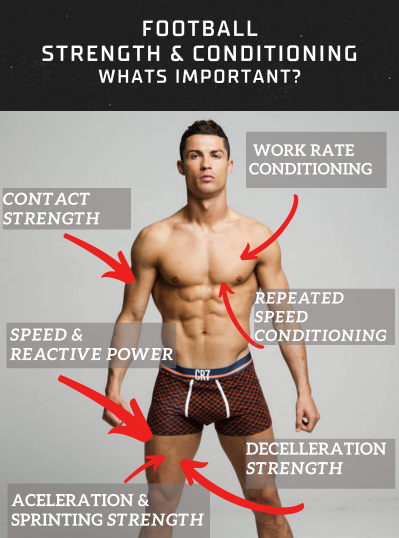Table of Contents
Introduction
Athletic Training in Soccer has changed a lot over the years, but there are still physical qualities that one must have to become a professional.
Players, on average, travel about 10 km per game, sprint every 30 seconds and are able to find solutions in the shortest time possible.
It is clear, therefore, that a footballer’s training involves the involvement of different muscle groups, but also the development of balance skills, speed of movement or sudden changes of direction.
Beyond technique and mental and psychological preparation (equally important), physical preparation is essential to improve performance and, consequently, make your way in this sector.
What is Athletic Training in Soccer?
Athletic training in soccer refers to the specialized physical conditioning and exercise programs designed to improve the performance of soccer players.
It focuses on enhancing their speed, agility, endurance, strength, and overall physical fitness.
Soccer is a demanding sport that requires players to have a high level of athleticism, and proper training plays a crucial role in helping them reach their full potential.
Why is Physical Training Important in Football?
Physical training is of utmost importance in football, as it directly impacts a player’s performance on the field. Football is a physically demanding sport that requires players to have a combination of strength, speed, agility, and endurance.
Proper athletic training helps players
- improve their overall fitness
- reduce the risk of injuries
- enhance their ability to perform at their best during matches
Physical training in football encompasses various aspects, including cardiovascular conditioning, strength training, speed and agility drills, and flexibility exercises.
These training methods help players develop the necessary physical attributes to excel in the sport.
Strength and Conditioning in Soccer
Strength and conditioning training is an essential component of athletic training in soccer. It focuses on improving a player’s muscular strength, power, and endurance.
This type of training involves exercises that target specific muscle groups used in soccer, such as the legs, core, and upper body.
Some common strength and conditioning exercises for soccer players include plyometric exercises, squats, lunges, deadlifts, push-ups, planks, and medicine ball exercises.
These exercises help players build a solid foundation of strength, which is vital for performing various soccer-specific movements, such as kicking, jumping, and changing directions quickly.
In addition to strength training, conditioning exercises are also crucial for soccer players.
These exercises aim to improve cardiovascular fitness and endurance, allowing players to maintain a high level of performance throughout a match.
What does a footballer’s preparation consist of?
Generally speaking, without considering the specific on-season and off-season training, the footballer carries out preparation that aims to improve the 3 skills we have just talked about.
Normally, a footballer’s physical preparation includes exercises to improve resistance, for example repetitions that prevent the risk of running out of breath on the pitch, or the 10-20-30 method (30 seconds of slow running, 20 at medium speed and 10 at maximum speed).
Furthermore, there are various exercises designed to train the speed of movements and changes of direction , which are fundamental on the pitch, considering the repeated accelerations and decelerations carried out by the player during the match.
Furthermore, the contribution of the gym, and in particular of exercises with weights , in the preparation of a footballer should not be underestimated.
How the athletic preparation of a young footballer works?
We have seen, in general, what the athletic preparation of a professional footballer is. It is not possible, however, to think that exercises or training of this type represent the ideal preparation for young footballers.
Training should always be adapted based on age and individual physiological development. For example, for young footballers between the ages of 13 and 15, training will focus more on coordination exercises, general muscle toning and aerobic exercises with or without the ball.
Regardless of age, young footballers also need specific preparations in relation to the role they intend to play.
Soccer Training Programs

There are various soccer training programs available that cater to the specific needs of players at different levels, from beginners to professionals.
These programs are designed to provide a structured approach to athletic training and help players improve their skills and physical fitness.
A well-designed soccer training program typically includes a combination of technical drills, tactical exercises, strength and conditioning workouts, and match simulations.
Furthermore, soccer training programs should be tailored to the individual needs and goals of the players. Factors such as age, skill level, position, and physical condition should be taken into consideration when designing a training program.
This ensures that players receive the appropriate training to enhance their performance and reach their full potential. Check out these training programs below
-
The Best 7 Athletic Football Preparation Exercises | Athletic Training |
- Real Game Athletic Programs
- Soccer Training
Conclusion
Athletic training in soccer is essential for players to improve their performance on the field. Physical training plays a vital role in football, helping players develop the necessary physical attributes to excel in the sport.
Strength and conditioning training is particularly important in soccer, as it enhances a player’s muscular strength, power, and endurance. Following a well-designed soccer training program is crucial for players to improve their skills and physical fitness.
By investing time and effort into athletic training, soccer players can enhance their overall performance and achieve success in the sport.
